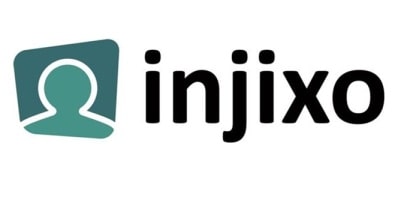We’re heading into the Christmas Period! For the lucky people not managing contact centres, that’s a blissful statement. This is amongst the busiest time of the year, especially for the customer service industry. The question that many contact centre managers and planners ask themselves now is:
 “How do I maintain service level successfully?”
“How do I maintain service level successfully?”
Depending on your industry, you may be in for a seasonal spike in call volume. A few examples: Travel industries see increases in volume as customers book holiday travel. They also get volume with winter storms closing airports and delaying or canceling flights. In e-commerce, volume comes in the form of shoppers looking for a deal. Contacts come in as they try to get more information about a product, explore price matching, or have a problem with something they bought.
Let’s explore the top 5 issues that contact centers face during the Christmas period and busy seasons.
1. No capabilities to flex up for the overall season
 There is an expression in business that goes like this “You don’t build a church for Easter Sunday”. What does that mean? Well, it means that you don’t invest in the cost of a church large enough to fit everyone on the busiest day of the year. If you do, you’ll end up spending too much money and your building will sit pretty empty most of the year. Instead, what you do is you build to something less than 100% of peak and then have contingencies for how you seat people on the busiest day. The percentage of peak you staff to is a judgement call and has trade-offs to consider. The same applies to staffing a contact center.
There is an expression in business that goes like this “You don’t build a church for Easter Sunday”. What does that mean? Well, it means that you don’t invest in the cost of a church large enough to fit everyone on the busiest day of the year. If you do, you’ll end up spending too much money and your building will sit pretty empty most of the year. Instead, what you do is you build to something less than 100% of peak and then have contingencies for how you seat people on the busiest day. The percentage of peak you staff to is a judgement call and has trade-offs to consider. The same applies to staffing a contact center.
Let’s assume a contact centre has an average month requirement of 100 FTE, the peak month is 120 FTE, and the lowest month is 80 FTE. In this case, you have a few options.
Option 1: Staff to the peak and VTO (unpaid voluntary time off) excess staff.
Option 2: Staff to the 80 FTE and solicit OT or miss service levels at peak times.
Option 3: Staff to the midpoint and do VTO during low months and OT during peak times.
But which option is for you?
This depends on how your business balances the customer vs. the employee. If you want to prioritize the customer and cost isn’t an issue, staff to the peak. If you have to keep costs minimal, you staff to the minimum. It’s important to keep in mind that these projections won’t be 100% correct. So when you staff to the minimum, you’re protecting your labor spend because if volume comes in too low, you don’t have to worry about having excess labour. On the flipside, if you staff to the peak, you may get even more calls than that. So in the scenario where you’re protecting your customers, you’ve already got a lot of staff and won’t have to take extreme measures to get a few more FTE for really high volumes, or you may have enough to cover an average month that goes 20% over forecast.
2. Lack of flexible workforce to flex up for a few days or hours
 Once you’ve got your total weekly or monthly staffing set, how do you handle a spike in volumes on a given day or on a few intervals? If you’re managing to a weekly or monthly service level, you may not worry about this. But if you want to provide a consistent customer experience, and measure service level on a daily or interval basis, you need to have tactics in place to solve this.
Once you’ve got your total weekly or monthly staffing set, how do you handle a spike in volumes on a given day or on a few intervals? If you’re managing to a weekly or monthly service level, you may not worry about this. But if you want to provide a consistent customer experience, and measure service level on a daily or interval basis, you need to have tactics in place to solve this.
First, let’s address why this happens. It can be as simple as an inaccurate forecast. But with the extra seasonal volumes, the impact is magnified. It can also happen if you have several contact centre agents call in sick that cover a similar timeframe. And you can also have an external event to drive an increase in demand. An airport closure for travel call centres, or a flash sale for e-commerce sites for instance can cause a lot of customers to call in to the centre in a short timespan.
Some solutions:
First, it’s always nice to have shifts that have built-in flexibility. In some contact centers I’ve been in, we had schedules identified as “Perm”, “Flex”, or “Semi-flex” along with the hours and days off. So a person may have a 9am – 5:30pm Monday – Friday Flex shift, for example. What do these mean?
A “Perm” shift means the hours are permanent. They work the hours on the shift with no changes until the next bid. A “Flex” shift means that with 2 weeks notice, their hours can change +/- 4 hours and their days off can change. For a “Semi-flex”, the hours can change by +/- 1.5 hours, but we don’t change their days off. This type of flexibility will help for longer term changes in demand. You may have several agents on a Leave of Absence, or the inaccurate interval or day of week forecast can be offset by being able to move these schedules.
When you’re reacting to a spike, a good approach is to have a one-pager that shows actions you take when your service level hits a threshold, or volume/AHT exceeds a threshold. You may say that if service level falls 5 points below the goal, non-critical offline activities are cancelled or rescheduled. If service level falls 10 points below the goal, all offline activities are canceled or rescheduled. This immediately gives you back capacity on the phones to help clear out the queue. If you want to take it to another level, then at an extreme drop (20 points below goal), you move to “All Hands on Deck”. This would mean not only are all offline activities cancelled, but team leaders, coaches, quality assurance analysts, etc… go on the phones. This is the ultimate sense of urgency and gets the entire call centre focused on solving the immediate challenge.
3. Long hold times
 Long hold times (meaning your customers are waiting in queue for a long time) can be a real frustration, and starts a bad customer experience, which then may drive up your handle times. More on handle times in the next section… . There may be no getting around this if your demand is too high. But there are a few ways to mitigate it and to improve the customer experience.
Long hold times (meaning your customers are waiting in queue for a long time) can be a real frustration, and starts a bad customer experience, which then may drive up your handle times. More on handle times in the next section… . There may be no getting around this if your demand is too high. But there are a few ways to mitigate it and to improve the customer experience.
One solution is to look at a technology that offers call backs for long hold times. There are a lot of products on the market that can do this for you. Fonolo for instance is a leading provider of cloud-based call-backs. You set the threshold (it may be an estimated wait time of 2 minutes, or 5 minutes) and the system will offer callbacks to the customers. This is great for customers because it means they can go about their business and get a call back based on the time they were quoted. It’s also great for you because it moves volume away from busy intervals and into subsequent intervals where you may have better availability.
Another method to consider is to have someone “triage” the call. This may not be ideal for all, but for some this is a really good solution. To do this, you take some of your agents to screen incoming calls. See if their issue can be solved by someone with a lower skill, or if they can be directed to self-service, a website, or some other place other than an agent if that can solve their problem quicker and easier. This filter means that the callers have been acknowledged and that they only wait if it’s absolutely necessary. In doing this, you may also be able to quickly get lesser trained agents onto the phones more quickly with less training to relieve the stress from service levels.
However, keep in mind that this may not be ideal for all contact centres. Make sure you know your customers and what they’re looking for. But you should definitely consider call-back as a viable solution.
4. Long (AHT)
 Long handle times can become an issue during holiday seasons for a few reasons. First, if more people are buying items, it increases the likelihood they need assistance, vs. just shopping around. Also, as people buy, it means more returns, or dissatisfaction with the purchase. Lastly, it can be a result of long wait times. When customers wait in queue for a long time, they want to share the feedback (and by feedback, I mean complaints).
Long handle times can become an issue during holiday seasons for a few reasons. First, if more people are buying items, it increases the likelihood they need assistance, vs. just shopping around. Also, as people buy, it means more returns, or dissatisfaction with the purchase. Lastly, it can be a result of long wait times. When customers wait in queue for a long time, they want to share the feedback (and by feedback, I mean complaints).
When your handle times are high, it increases your demand and further hurts service levels. So you really need to manage this.
There are 3 components to handle time:
Talk time – Hold time and After-Call-Work time
When managing Talk time, look at staffing each interval to service level. By doing this, you increase your overall service level and reduce the likelihood of calls in queue that drive up handle time. It does require more staff to plan each interval to hit service level, so take a look at this cost vs. the savings by not having the talk time impact of queuing.
Hold time is the next component of average handle time. Generally agents put people on hold because they need to do research or ask a question. This really falls outside of workforce management, but as you’re looking for suggestions to offer, get the agents educated on the top call drivers. Consider an FAQ (Frequently Asked Questions) document for your agents. If you get the top call information into their hands, they can get answers more quickly and reduce hold time.
Finally, you have After-Call-Work (ACW) time. This can be tricky, because you have some of this that is legitimate (e.g. documenting the previous call) and some is behavioral (e.g. taking a break by pressing your ACW button). Set achievable targets for ACW. Look at the behaviors of your top agents, train to that, and set your targets at the level the top agents perform at.
5. Absenteeism of staff
 Do you know your absenteeism policy? I’ve seen these policies all over the place. Some are generous and some are extremely strict. Enforcement of the policies can also be inconsistent across agents within the same call center. Because of this, you can’t rely on this to ensure your absenteeism targets are met. And with winter overlapping with the holiday season (for those of us in the northern hemisphere), legitimate illnesses can increase.
Do you know your absenteeism policy? I’ve seen these policies all over the place. Some are generous and some are extremely strict. Enforcement of the policies can also be inconsistent across agents within the same call center. Because of this, you can’t rely on this to ensure your absenteeism targets are met. And with winter overlapping with the holiday season (for those of us in the northern hemisphere), legitimate illnesses can increase.
Let’s tackle this a few ways. First, during peak season, consider running an incentive for agents who have perfect attendance. This can be something as simple as extra time off (in January) to gift cards, to cash to appliances. The key is it needs to be meaningful to your teams. If you want to manage the budget a bit, consider having the winners go into a drawing for prizes. That can give you even more value for the incentives. If you want to build the case for this, do a cost-benefit analysis of hiring extra staff for high absenteeism vs. the cost of the incentive. This may also help inform your budget for the incentive.
OK, now that you have that in place, the reality is you’re still going to have days and times of days where you have high absenteeism. This is where you want to have a flexible workforce. I’ll talk more about flexible workforce in an upcoming blog, but it’s simply giving yourself levers you can pull quickly. A few examples are having some of your agents work at home that can log in when needed to work extra hours. You can look at #2 above for more ideas here to offset absenteeism issues.
Conclusion
However you decide to prepare for peak season, make sure you take an intentional approach. October is a great month to lay out all of the plans and contingencies. Educate your partner in operations about how the season will flow and ensure you have the right points of escalation on both sides documented and communicated. I recommend creating some materials that you can just reuse each year. So as you create the documents with your plans, don’t create them exclusively to solve for this year’s problems. Think about the systems and structure of your staffing and service level management plans.
Get active sign off from the leadership so everyone is engaged and supportive. This extra step will pay off as you get into crunch time.
This is your time to shine!
![]()
 Charles Watson has over 20 years of experience in Contact Centre operations helping companies of all sizes optimize their workforce. Charles was Vice President Global WFM at American Express Global Business Travel among many other Fortune 500 companies he served for.
Charles Watson has over 20 years of experience in Contact Centre operations helping companies of all sizes optimize their workforce. Charles was Vice President Global WFM at American Express Global Business Travel among many other Fortune 500 companies he served for.
He is an industry expert on Workforce Management.
 injixo is a product of InVision, a market leader in WFM for over 25 years.
injixo is a product of InVision, a market leader in WFM for over 25 years.
InVision built on its knowledge and experience to launch injixo as one of the first cloud workforce management (WFM) solutions for contact centres on the market back in 2011, and gained the accolade of first to market with AI-based forecasting. Since then, the injixo user community has exploded and will continue to innovate and push the boundaries of WFM.
For additional information on Injixo view their Company Profile




